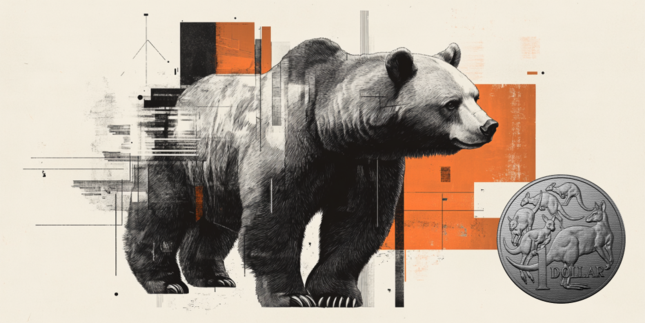The current drawdown might exceed 20% peak to trough on the S&P 500, but I do not expect a deep and prolonged bear market like that of the early 2000s or Global Financial Crisis.
As I said last month, the last all-time high in the S&P (on Jan 3rd) looks inconsistent with past major market tops across several frameworks: lack of yield curve inversion, bond yields relative to earnings yields, market performance, margin debt build-up, market breadth, uncertainty, private sector balance, etc. The secular bull market that started from the 2009 generational low is probably not over.
The S&P 500 is back to the middle of its log scale trend channel. The bottom end of the channel is around 3750, which would be a 22% decline from the all-time closing high of 4797 on Jan 3rd. That kind of decline is roughly consistent with the following historical analogs: 1990 (Iraq/Kuwait oil price spike/US recession), 1998 (Russian default/Asian financial crisis), 2011 (Eurozone recession/debt crisis), and 2018 (Fed QT + growth scare). It's also worth noting, even given the differences, that the market traded higher through the 1962 Cuban Missile Crisis with only a shallow drawdown along the way.
On Monday, the 50-day moving average crossed below the 200-day moving average on the S&P, creating the ominous-sounding "death cross" signal - a popular trend-following indicator among technical analysts.
Despite its name, the death-cross has been a contrarian signal outside of the aforementioned major bear markets (13 out of the last 15 times). Excluding the early 2000s and GFC, the signal has produced positive returns over the following year, with an average gain of 19% (13 examples going back to 1990): Here are the 1-year returns following the signal for the relevant analogs: 1990= +21%, 1998= +22%, 2011= +19%, 2018= +18%. In contrast, the early 2000s and GFC death-cross examples produced subsequent 1-year returns of -24% and -39%, respectively. But I don't think we're in that type of environment for reasons already stated.
Encouragingly, the oil price has come down sharply in recent days. From the peak last week, oil futures are down about 30% and back below $100 a barrel as of writing. The Fed will likely proceed with an initial rate hike but indicate heightened uncertainty and data dependency going forward.
As always - and particularly right now - the outlook requires constant reassessment. And everyone needs to put probability and reward-to-risk assessments in the context of their strategy, process, and time horizon.
The Merk Hard Currency Fund is a no-load mutual fund that invests in a basket of hard currencies from countries with strong monetary policies assembled to protect against the depreciation of the U.S. dollar relative to other currencies. The Fund may serve as a valuable diversification component as it seeks to protect against a decline in the dollar while potentially mitigating stock market, credit and interest riskswith the ease of investing in a mutual fund. The Fund may be appropriate for you if you are pursuing a long-term goal with a hard currency component to your portfolio; are willing to tolerate the risks associated with investments in foreign currencies; or are looking for a way to potentially mitigate downside risk in or profit from a secular bear market. For more information on the Fund and to download a prospectus, please visit www.merkfund.com. Investors should consider the investment objectives, risks and charges and expenses of the Merk Hard Currency Fund carefully before investing. This and other information is in the prospectus, a copy of which may be obtained by visiting the Fund's website at www.merkfund.com or calling 866-MERK FUND. Please read the prospectus carefully before you invest. The Fund primarily invests in foreign currencies and as such, changes in currency exchange rates will affect the value of what the Fund owns and the price of the Funds shares. Investing in foreign instruments bears a greater risk than investing in domestic instruments for reasons such as volatility of currency exchange rates and, in some cases, limited geographic focus, political and economic instability, and relatively illiquid markets. The Fund is subject to interest rate risk which is the risk that debt securities in the Funds portfolio will decline in value because of increases in market interest rates. As a non-diversified fund, the Fund will be subject to more investment risk and potential for volatility than a diversified fund because its portfolio may, at times, focus on a limited number of issuers. The Fund may also invest in derivative securities which can be volatile and involve various types and degrees of risk. For a more complete discussion of these and other Fund risks please refer to the Funds prospectus. The views in this article were those of Axel Merk as of the newsletter's publication date and may not reflect his views at any time thereafter. These views and opinions should not be construed as investment advice nor considered as an offer to sell or a solicitation of an offer to buy shares of any securities mentioned herein. Mr. Merk is the founder and president of Merk Investments LLC and is the portfolio manager for the Merk Hard Currency Fund. Foreside Fund Services, LLC, distributor.
Recommended Content
Editors’ Picks

AUD/USD weighed down by China, tariffs
AUD/USD remained on the back foot, slipping back to the area of multi-year lows around 0.5950 on the back of mounting fears surrounding tariffs and their impact on the Chinese economy.

EUR/USD refocuses on 1.1000 amid tariffs jitters
EUR/USD reversed two daily pullbacks in a row an d managed to advance to the boundaries of the 1.1000 barrier on the back of fresh weakness hurting the US Dollar and persistent tariff fears.

Gold erases gains, back to the $2,980 zone
Gold prices now lose extra ground and slip back to the area of daily troughs near $2,980 mark per troy ounce following an unsuccesful attempt to maintain the trade above the critical $3,000 level earlier in the day.

XRP drops 3% as Ripple announces $1.25 billion acquisition of prime brokerage firm Hidden Road
Ripple announced on Tuesday that it is acquiring prime brokerage firm Hidden Road to enhance its institutional offerings and increase the adoption of the RLUSD stablecoin and the XRP Ledger (XRPL).

The Fed is looking at a hefty price level
We are still in thrall to tariffs, the faux-macro “data” driving markets. The WSJ editorial board advised other countries to take their tariffs to zero so that Trump’s “reciprocal” tariffs will have to be zero, too. Cute, but no cigar.

The Best brokers to trade EUR/USD
SPONSORED Discover the top brokers for trading EUR/USD in 2025. Our list features brokers with competitive spreads, fast execution, and powerful platforms. Whether you're a beginner or an expert, find the right partner to navigate the dynamic Forex market.
